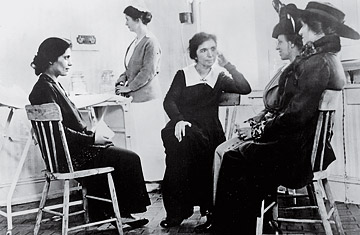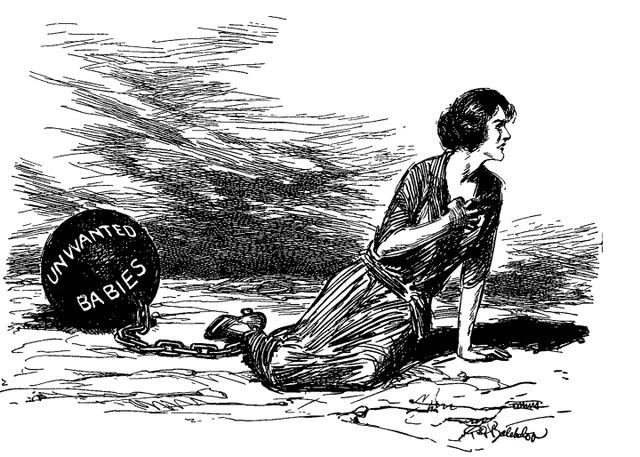
Birth control advertisement, 1968. Courtesy of the Library of Congress.

Birth control advertisement, 1968. Courtesy of the Library of Congress.
By 1965, five years after its FDA approval, the Pill became the leading method of contraception. In 1970, over half of married women in the U.S. were protected by popular contraceptive methods, a 500% increase from 1960.
By the early 1970s, many barriers impeding women’s employment had been broken; the number of women entering the workforce has gradually increased since then.

Women's Labor Force Participation Rate from 1955-2005. Courtesy of the Federal Reserve Bank of St. Louis.

A deep-rooted commitment to women, their health, and their rights drove activists like Sanger throughout the birth control movement. Margaret Sanger is pictured in first birth-control clinic in the United States, 1916. Courtesy of the Everett Collection.
"Birth control is the first important step woman must take toward the goal of her freedom. It is the first step she must take to be man’s equal. It is the first step they must both take toward human emancipation."
- Margaret Sanger, Morality and Birth Control, 1918.

An editiorial cartoon published in Birth Control Review, 1916.
The development of the Pill is due to the courageous feminists, physicians, and allies who broke numerous barriers to create safe, reliable means of hormonal contraception for all women.